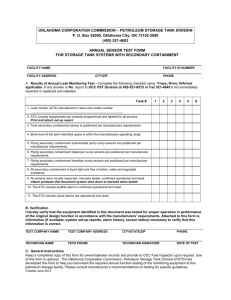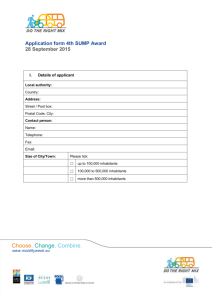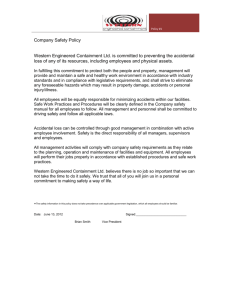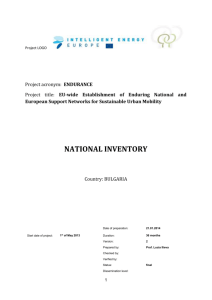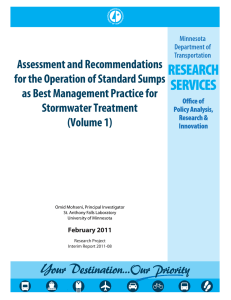15A NcAC 02N .0905 CONTAINMENT SUMPS (a) Containment
advertisement
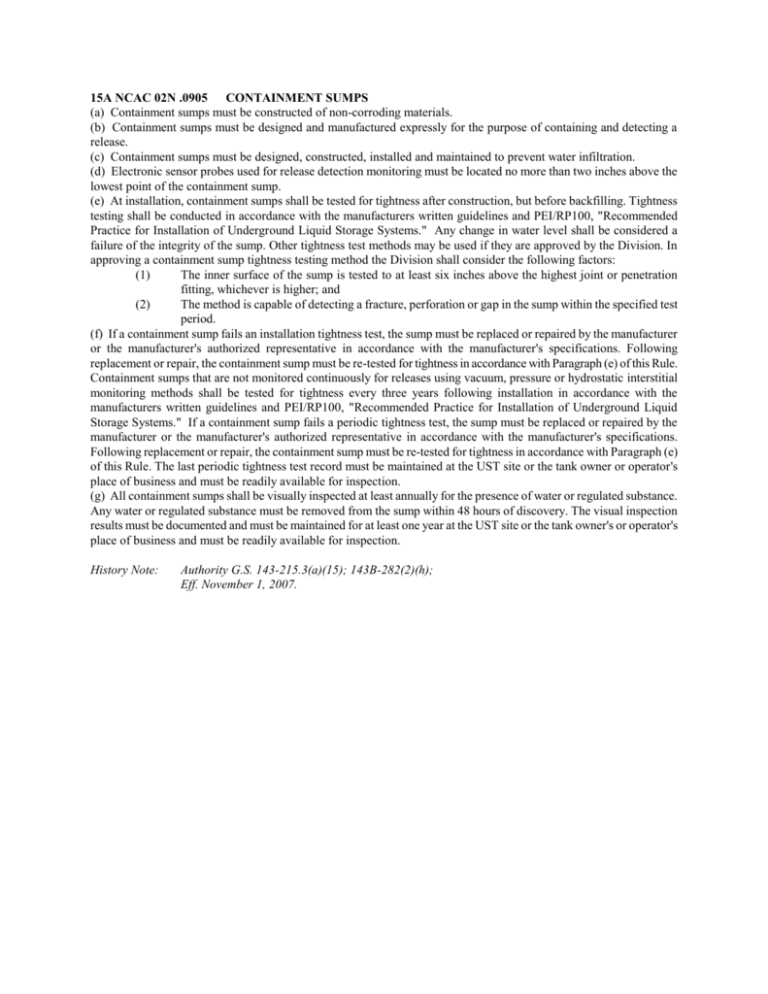
15A NCAC 02N .0905 CONTAINMENT SUMPS (a) Containment sumps must be constructed of non-corroding materials. (b) Containment sumps must be designed and manufactured expressly for the purpose of containing and detecting a release. (c) Containment sumps must be designed, constructed, installed and maintained to prevent water infiltration. (d) Electronic sensor probes used for release detection monitoring must be located no more than two inches above the lowest point of the containment sump. (e) At installation, containment sumps shall be tested for tightness after construction, but before backfilling. Tightness testing shall be conducted in accordance with the manufacturers written guidelines and PEI/RP100, "Recommended Practice for Installation of Underground Liquid Storage Systems." Any change in water level shall be considered a failure of the integrity of the sump. Other tightness test methods may be used if they are approved by the Division. In approving a containment sump tightness testing method the Division shall consider the following factors: (1) The inner surface of the sump is tested to at least six inches above the highest joint or penetration fitting, whichever is higher; and (2) The method is capable of detecting a fracture, perforation or gap in the sump within the specified test period. (f) If a containment sump fails an installation tightness test, the sump must be replaced or repaired by the manufacturer or the manufacturer's authorized representative in accordance with the manufacturer's specifications. Following replacement or repair, the containment sump must be re-tested for tightness in accordance with Paragraph (e) of this Rule. Containment sumps that are not monitored continuously for releases using vacuum, pressure or hydrostatic interstitial monitoring methods shall be tested for tightness every three years following installation in accordance with the manufacturers written guidelines and PEI/RP100, "Recommended Practice for Installation of Underground Liquid Storage Systems." If a containment sump fails a periodic tightness test, the sump must be replaced or repaired by the manufacturer or the manufacturer's authorized representative in accordance with the manufacturer's specifications. Following replacement or repair, the containment sump must be re-tested for tightness in accordance with Paragraph (e) of this Rule. The last periodic tightness test record must be maintained at the UST site or the tank owner or operator's place of business and must be readily available for inspection. (g) All containment sumps shall be visually inspected at least annually for the presence of water or regulated substance. Any water or regulated substance must be removed from the sump within 48 hours of discovery. The visual inspection results must be documented and must be maintained for at least one year at the UST site or the tank owner's or operator's place of business and must be readily available for inspection. History Note: Authority G.S. 143-215.3(a)(15); 143B-282(2)(h); Eff. November 1, 2007.
